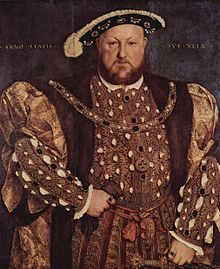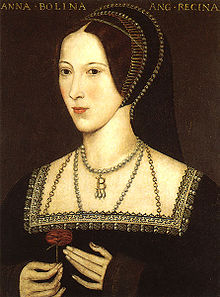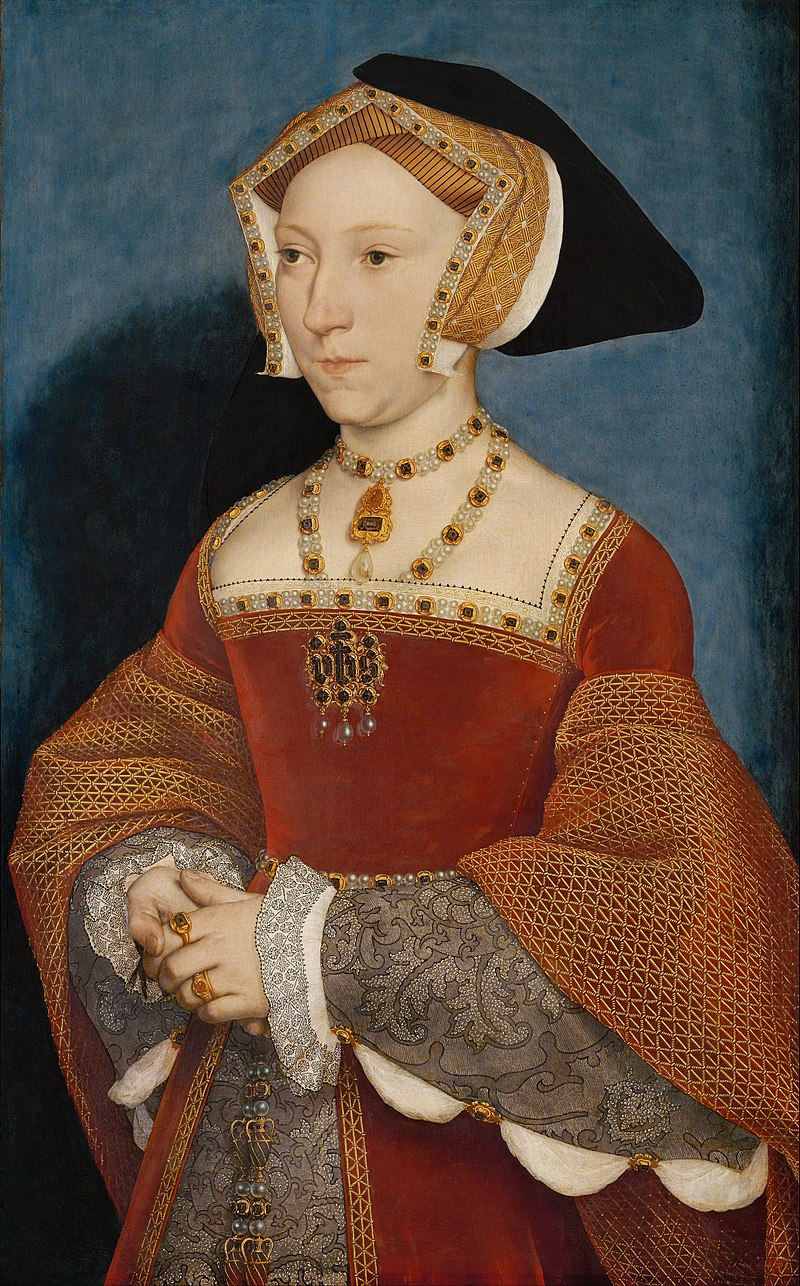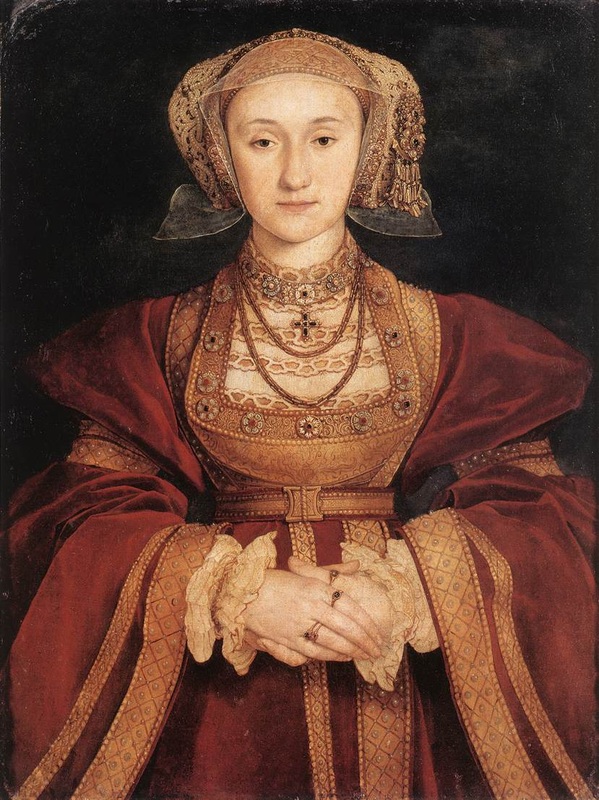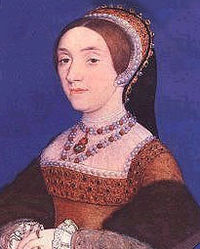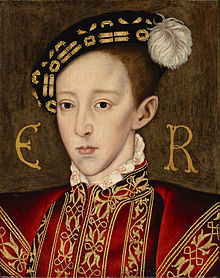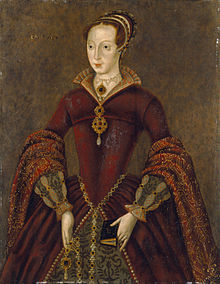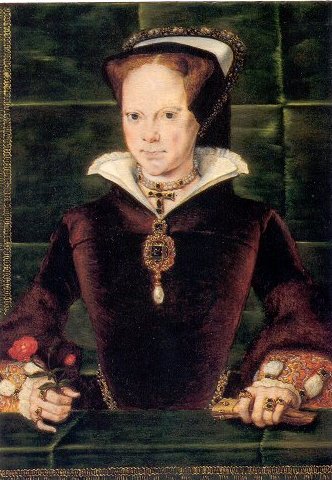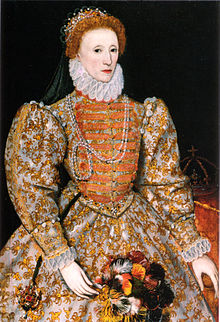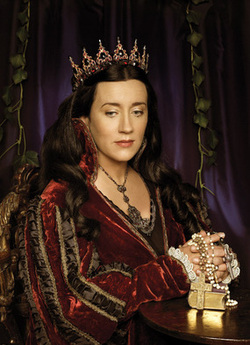
Just for a little background information (for those who might not be as familiar with Katherine’s story), she had been arranged to marry the English heir apparent, Prince Arthur Tudor of Wales, pretty much since infancy. Although she was born and raised in Spain – daughter to King Ferdinand of Aragon and Isabella of Castile – she knew that one day her proper place would be in England. She would marry into the royal family and become the Princess of Wales, and eventually the Queen of England. When she was fifteen, she married Arthur Tudor, who was the same age, and they enjoyed only five months of married life before Arthur suddenly died – (the cause of death being somewhat ambiguous). Seven years later, after much debate about whether or not to send Katherine back to Spain, or even for the recent widower King Henry VII to marry her himself, she married Arthur’s younger brother Prince Harry (soon to be known as King Henry VIII). Although this was very much a political marriage in an effort to keep her generous dowry in England, many say that Henry was actually very interested in her, and may have even been in love with her while she was Arthur’s wife.
Whatever the reasons for the marriage, the two were married for about twenty-four years, producing only one living child – a daughter named Mary. At the time that Henry VIII was seeking an annulment from Katherine, he claimed that he had been sinful in taking his brother’s widow, and that he believed she had in fact, consummated the marriage with Arthur, although she denied it vehemently. Of course, we know how this story ends – Katherine does eventually get cast aside in favor of Henry’s new love, Anne Boleyn, but what is the truth about Katherine’s first marriage? As we can see, such a small detail of consummation (one that we would see as an …(ahem)… private matter) was definitely not private or small in the Tudor court. The question of consummation changed everything for Henry and Katherine – so what really happened? Did Katherine actually consummate her marriage with her first husband of only five months? Did she lie about it later to protect herself and her precious daughter? Or was Arthur really too frail and sickly to perform his husbandly duties? I’d like to take some time to address these questions and give my own opinions, and I’d love to know your opinions also!
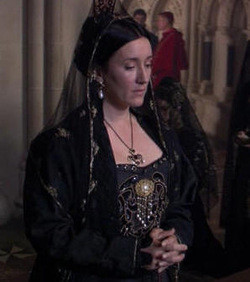
One thing that I’ve heard many people say about this topic is that Katherine of Aragon would never have told such a great lie – being the devout and extremely religious woman that she was. People will argue that “she was too good a Catholic” or “she would have felt tremendous guilt” for telling such a lie, and that her conscience simply wouldn’t allow it. While I agree (and I think everyone can) that Katherine was an admirably pious and Catholic woman, we have to remember that people in the sixteenth-century saw things a bit differently than we do now – and that even matters of religion can be a little fuzzy. In many cases, royals and nobles considered themselves ‘destined for the throne’ by God’s will, and they would do whatever they had to do in order to fulfill God’s command to them. As we see later on, once Katherine’s marriage to Henry VIII is in shambles, she fiercely refuses to be known as anything other than “Queen of England.” When the King’s men refer to her as her proper new title, Dowager Princess, she continues to correct them, saying that she will die as the rightful and God-anointed Queen! Based on her opinion and behavior in these matters, I think it’s safe to say that she felt quite passionate about her place on the English throne. Think about it: From the time she was a baby, she was told and treated like she was going to be a Queen. She grew up thinking it and learning it – this was her duty! Why, then, wouldn’t a woman do everything she could in order to fulfill that duty – even if it meant telling a great lie? By telling a lie like this from the time Arthur died, she must have known she would be considered as Prince Henry’s bride – thus becoming the Queen she had always prepared to be! Later, of course this lie would serve as an attempt to keep her on the throne and as Henry’s wife. As long as it was in favor of God’s will (as she must have believed it was), then it may have been okay in her eyes.
As for the question of Katherine’s guilt, there is evidence later in her life of that! Interestingly enough, it has been recorded that near the end of her second marriage and within the last few years of her life, she had begun wearing hair shirts – which was a form of penitence for sins in the Catholic faith. These shirts were worn underneath other clothes, and brushed against the body in a painful way, reminding you of your sins and unworthiness of God’s forgiveness. Another known wearer of hair shirts was the extremely devoted Thomas More, who would die for his beliefs in the Catholic faith and his refusal to accept King Henry VIII as Supreme Head of the Church. Of course, it is possible that Katherine, being the pious woman that she was, wanted to wear the hair shirts simply because it was part of her beliefs, but the timing of it is a bit ironic, isn’t it? Although I have not found the exact dates that she is recorded to have been wearing them, the fact that they were “in her later years” tells me that it was around the time that she was vehemently arguing her case to the King and the bishops, cardinals, and even the Pope himself! Perhaps telling all of these people that she had not consummated her marriage to Arthur (when maybe she really had), was cause for a guilty conscience, and this was her form of penance.
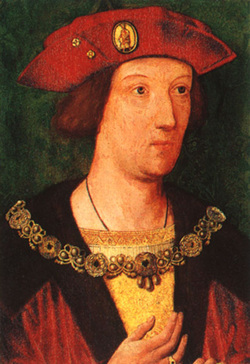
The reports of Katherine and Arthur’s wedding night would also give every indication that their marriage was consummated. Although they were both only fifteen years old, this was considered the perfect age for marriage and child-bearing at this time, and certainly there had been cases of much younger women becoming pregnant (such as Lady Margaret Beaufort, who gave birth to Henry VII when she was twelve)! In his book Six Wives, David Starkey describes how the newly-married couple was put to be on their wedding night:
"What happened then, only God knows. The herald, a strictly contemporary witness, assumed that nature had taken its course. ‘And thus these worthy persons concluded and consummated the effect and complement of matrimony.’”
Katherine and Arthur would have been put to bed in a very public ceremony, as newly-married royals were. There would have been people to help Arthur prepare for bed and see that he was properly situated with his new wife. Even the Marquess of Dorset reported recalling that Arthur had gotten into bed beside Katherine, who was “lying underneath the coverlet.” So, the two certainly went to bed together! Of that, there is plenty of evidence. What could have stopped them from consummating the marriage at that point?
Interestingly, Arthur made some significant comments the morning after his wedding night with Katherine, asking one of his servants to fetch him a cup of ale and saying, “for I have been this night in the midst of Spain!” Later, the Prince also openly said, “Masters, it is good pastime to have a wife.” Some people have read these statements and believed that Arthur was simply covering up the fact that he was not consummating his marriage – perhaps telling lies and acting overly-excited about his new bed-mate. However, I think that’s a bit of a stretch. It was common in the sixteenth-century for men to brag about their wives and the excitements of the bedchamber. Why should Arthur be any different? As a self-professed “lusty and amorous” teenager, I don’t think it’s at all odd that he would say such things, and these are certainly comments that stuck in men’s minds once Katherine began insisting that her marriage had not been consummated years later!
Overall, it’s important to remember the reasons for a political marriage in Tudor times. With Arthur being a Prince and Katherine being a Princess, they had obligations to the crown of England – namely, creating an heir for the throne. Remember, at the time they married, Arthur was the future King, so an heir would have been something that everyone at court (especially his grandmother Margaret Beaufort) would have been pushing him for. It was very common and desirable for a bride to become pregnant very quickly after her marriage. This proved that she was fertile and that the marriage would prove to be a success. With that in mind, why wouldn’t Arthur and Katherine have consummated the marriage like they would have been expected to do? This was completely normal, and unless there was some impediment that had never been recorded, there should have been nothing stopping them. Of course, the fact that Katherine did not get pregnant in those five months leaves some people inferring that the couple had never tried – however, as we can see in Katherine’s later years, she did not have the best luck with becoming (and remaining) pregnant, so perhaps this was simply the work of nature. In any case, this would have been a very normal royal marriage from the start, and Katherine and Arthur would have virtually been pushed into bed together!

One piece of information that causes some historians to question everything, though, is that of Katherine’s duenna, Doña Elvira, who insisted that the Princess had never consummated the marriage. Interestingly enough, the duenna and Katherine were never close, and Doña Elvira would even end up betraying Katherine in another matter later on – yet she would never go back on her insistence that Katherine had not consummated her marriage with Arthur. David Starkey says in his book:
“She, Donna Elvira, and all the matrons of her lady's household would swear, of their personal knowledge, that Princess Katherine was virgo intacta..., and examination by qualified persons would prove as much.”
If the duenna had been lying, and if an examination on Katherine had truly taken place, the consequences of such a lie would be great, and Doña Elvira would have never been able to face Queen Isabella of Castile again. Why, then would she tell such a risky lie? Unless Katherine had lied to her about the lack of consummation, it might be unlikely that the duenna would have taken such a risk for a Princess she didn’t even get along well with. Why risk the wrath of the rulers of two European powers?
Conclusion
Overall, the evidence speaks volumes in my opinion, although of course we will never know for certain what happened during those five short months of marriage. Since virtually no written reports of Katherine or Arthur’s wedded happiness remains, we can’t even be certain of their feelings for each other. All we have to go off of is speculation, and by carefully analyzing the customs, traditions, and ways of life in the Tudor era, we can make more knowledgeable claims and guesses as to what really happened. If you couldn’t tell from my writing, I absolutely believe that Katherine and Arthur consummated their marriage, but in an effort to become and remain King Henry VIII’s wife and keep her daughter Mary in the line of succession, she told the lie so that her marriage would be considered valid. Remember what I said earlier about lying in the name of God and His will? I think Katherine fits that mold perfectly.
Of course, I could be completely wrong about all of this! But that is the fun part about not knowing for sure. I’ve really enjoyed researching, reading, and contemplating this topic, and I hope some of the things I’ve said will stick out to you and make you think a little harder about one of the Tudor Dynasty’s greatest controversies.
Sources:
Starkey, David. “Six Wives: The Queens of Henry VIII” 2004.

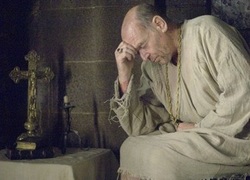

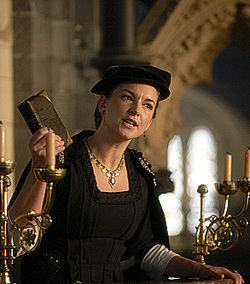

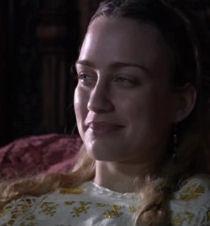
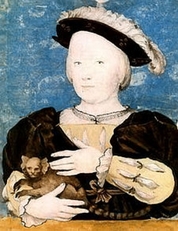
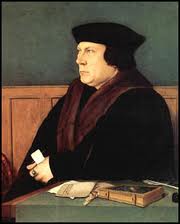

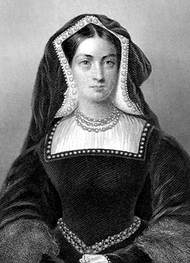
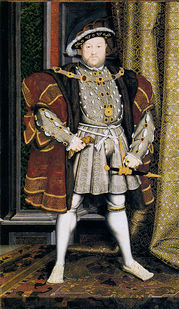
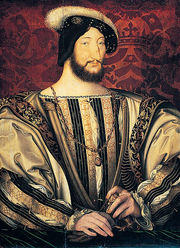


 RSS Feed
RSS Feed
